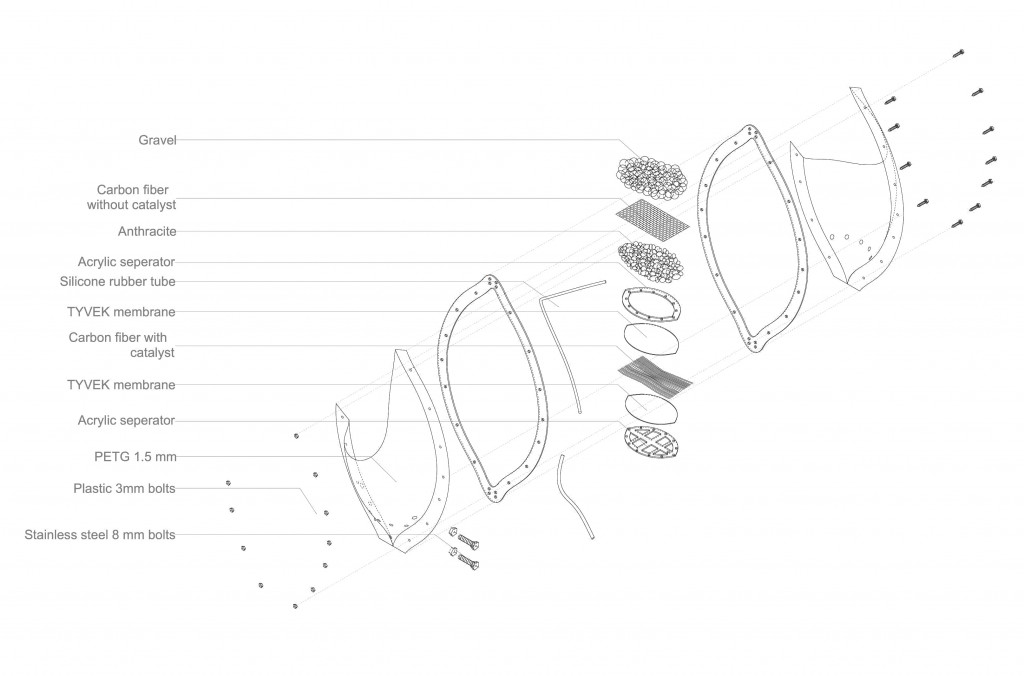Bio-MON is a novel innovation, utilizing fundamental concept of electro wetland and adding to it an architectural factor to function in urban spaces. An electro wetland is a natural wastewater management system that uses organic matter to generate electricity through oxidation.
Studies show that the electro wetland system has been applied in several disciplines previously. However, only a few have been carried out in an architectural approach. This paper investigates the application and use of this multidisciplinary technology relating to design, computation and digital fabrication to explore the use of these strategies to create better spaces for living through a regenerative circular design.
This fits the circular design by returning useful energy sources to the environment by finishing a cycle that produces outcomes like electrical energy, purified water and air. Additionally, manufacturing and construction process of Bio-MON is eco-friendly, reducing costs and wastes of natural resources. Unlike linear patterns, this can continue working and producing resources after primary use.
The design provides opportunities to utilize technology for achieving high energy production and adapt to any space or shape as required. Using digital fabrication strategies to build the module with easily available substances makes the procedure simpler for required reproduction.
BIOELECTROCHEMICAL SYSTEMS
LAYER DETAILS
ELECTRICAL OUTPUT
PROTOTYPE 1
PROTOTYPE 2
PROTOTYPE 3
BIO-MON is a part of SE.9 – URBAN BIO-SYSTEMS 2018
Faculty: Chiara Farinea
Biophotovoltaic technology experts: Pau Bosh, Clara Corbella (Leitat)
Computational Expert: Rodrigo Aguirre
Fabrication Expert: Ricardo Mayor Luque
Student assistant: Mohamad El Atab
Students:
Maya Mohan (maya.mohan@iaac.net)
Ozge Tektas (ozge.tektas@iaac.net)
Nusrat Tabassum (nusrat.tabassum@iaac.net)








